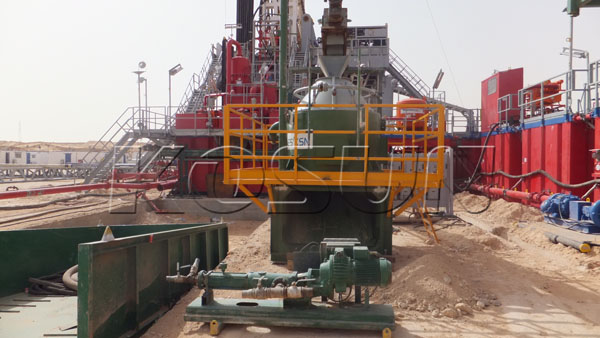- Home
- Products
-
-
Solids Control Equipment
- Linear Motion Shale Shaker
- Decanter Centrifuge
- Mud Cleaner
- Vacuum Degasser
- Centrifugal Pump
- Shear Pump
- Submersible Slurry Pump
- Mud Agitator
- Mud Gun
- Jet Mud Mixer
- Desilter
- Water Tank
- LS606 Shale Shaker
- Mud Tank
- LS1850 Shale Shaker
- Diesel Tank
- Dome-shaped mud cleaner
- Vertical cyclone desilter
- KQG30 Automatic Tank Cleaning
- MD210 Drilling Mud Cleaner
-
Solids Control System
- Solids Control System
- Mobile Solids Control System
- Arctic Solids Control System
- Drilling Mud Cooling System
- Liquid Mud Plant (LMP )
-
TBM
- Tunnel Boring Mud System
-
HDD
- HDD Mud Recovery System
-
-
- News
- Services
- Marketing
- About Us
- Contact Us
- Videos
Home > KOSUN News >
Drilling Waste Mud Treatment - Mud-Free Treatment System
Jul 11, 2023
Drilling waste mud is one of the main sources of pollution in the oil and gas industry. Due to engineering requirements, drilling mud contains a mixture of oil, water, organic clay, and other substances. In recent years, the use of oil-based mud, water-based mud, and composite-based mud has increased, leading to rising costs and environmental pollution issues.

The emergence of mud-free treatment systems has successfully solved the problem of inefficient and environmentally unfriendly disposal of drilling waste. The main process of the mud-free treatment system involves treating the drilling waste that returns from the wellbore before it reaches the ground, rendering it harmless and preventing it from touching the ground. Alternatively, the waste mud in the waste mud pit can be diluted and then treated and utilized through classification. This achieves the mechanization of drilling environmental protection devices. Mud that has undergone effective and harmless treatment can be reused, reducing frictional resistance, lowering the incidence of accidents, and improving wellbore quality.
Unlike traditional methods, the mud-free system changes the treatment of waste mud from "end-of-pipe management" to "whole-process control." The waste mud is diluted, flocculated, and separated into cuttings, mud cakes, and water. Solid particles in the mud are washed, flocculated, and chemically reacted to ensure that the cuttings and mud cakes meet discharge standards. Harmful substances and chloride ions in the mud are separated into the water, which is then dehydrated to form mud cakes using vacuum adsorption or squeezing methods. The wastewater separated by centrifugation undergoes processes such as gas flotation sedimentation, filtration, and reverse osmosis concentration. The treated wastewater that meets the standards can be reused in drilling circulation.
The separated waste materials, such as cuttings, can be purified, dried, and recycled as concrete aggregates. The slurry water generated from cleaning the cuttings can be treated with additives, destabilized, flocculated, and subjected to solid-liquid separation to form mud cakes. These can be mixed with clay or shale in proportion for brick firing. The separated filtrate undergoes pretreatment processes such as destabilization, flocculation, flotation, oxidation, and adsorption filtration to remove the main pollutants. It can be used for oilfield reinjection, safe strata re-injection, or discharged according to the standards. Wastewater can achieve standard discharge after treatment by the wastewater treatment system.
Tags: Drilling Waste Mud Treatment, Mud-Free Treatment System, disposal of drilling waste, oil-based mud Treatment System, water-based mud Treatment System, composite-based mud Treatment System, suppliers, manufacturers, factory, wholesale, buy, price, quotation, bulk, for sale, companies, stock, cost.


